Meditation
MEDITATION
Meditation: Simply means connecting with super natural power by controlling our thoughts, mind & body, there are different ways of meditation but I like VIPASSANA the most
Meditation is generally an inwardly oriented, personal practice, which individuals can do by themselves. Prayer beads or other ritual objects may be used during meditation. Meditation may involve invoking or cultivating a feeling or internal state, such as compassion, or attending to a specific focal point. The term can refer to the state itself, as well as to practices or techniques employed to cultivate the state.
There are dozens or more specific styles of meditation practice; the word meditation may carry different meanings in different contexts. Meditation has been practiced since antiquity as a component of numerous religious traditions.
There are different type of Religious and spiritual Meditation:
1 Bahá’í Faith
2 Buddhism (Vipassana)
3 Christianity
4 Hinduism
5 Islam
6 Jainism
7 Judaism
8 New Age
9 Sikhism
10 Taoism
11 Jiddu Krishnamurti
12 Meher Baba
13 Prayer beads
14 Secular Meditation – Mindfulness
15 Modern cross-cultural dissemination
16 Western Meditation
Ref from: http://www.dhamma.org/
Vipassana Meditation
Vipassana Meditation As Taught By S.N. Goenka
in the tradition of Sayagyi U Ba Khin
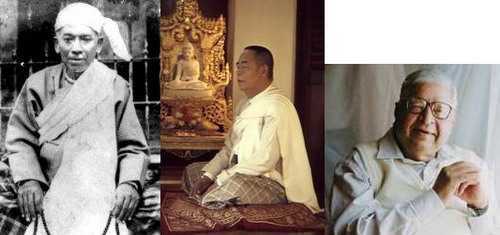
Sri U Po Thet Sri U Ba Khin Sri S.N. Goenka
——————————————————————————–
Vipassana, which means to see things as they really are, is one of India’s most ancient techniques of meditation. It was taught in India more than 2500 years ago as a universal remedy for universal ills, i.e., an Art of Living. For those who are not familiar with Vipassana Meditation, an Introduction to Vipassana by Mr. Goenka & related videos and Questions & Answers about Vipassana are available.
——————————————————————————–
The technique of Vipassana Meditation is taught at ten-day residential courses during which participants learn the basics of the method, and practice sufficiently to experience its beneficial results.
——————————————————————————–
There are no charges for the courses – not even to cover the cost of food and accommodation. All expenses are met by donations from people who, having completed a course and experienced the benefits of Vipassana, wish to give others the opportunity to also benefit.
——————————————————————————–
Courses are given in numerous Meditation Centers and at non-center course locations at rented sites. Each location has its own schedule of courses. In most cases, an application for admission to each of these courses can be made by clicking on a selected one of the listed course dates that appear in the schedule.
There are numerous Centers in India and elsewhere in Asia/Pacific; ten Centers in North America; three Centers in Latin America; eight Centers in Europe; seven Centers in Australia/New Zealand; one Center in the Middle East and one Center in Africa.
Ten day non-center courses are frequently held at many locations outside of Centers as they are arranged by local students of Vipassana in those areas. An alphabetical list of worldwide course locations is available as well as a graphical interface of course locations worldwide and in India and Nepal.
——————————————————————————–
Vipassana Meditation courses are also being taught in prisons.
——————————————————————————–
A special 10-day Vipassana course especially for business executives and government officials is being held periodically at several centers around the world.
http://www.dhamma.org/en/bycountry/ap/in/
The Technique
Vipassana, which means to see things as they really are, is one of India’s most ancient techniques of meditation. It was rediscovered by Gotama Buddha more than 2500 years ago and was taught by him as a universal remedy for universal ills, i.e., an Art Of Living.
This non-sectarian technique aims for the total eradication of mental impurities and the resultant highest happiness of full liberation. Healing, not merely the curing of diseases, but the essential healing of human suffering, is its purpose.
Vipassana is a way of self-transformation through self-observation. It focuses on the deep interconnection between mind and body, which can be experienced directly by disciplined attention to the physical sensations that form the life of the body, and that continuously interconnect and condition the life of the mind. It is this observation-based, self-exploratory journey to the common root of mind and body that dissolves mental impurity, resulting in a balanced mind full of love and compassion.
The scientific laws that operate one’s thoughts, feelings, judgements and sensations become clear. Through direct experience, the nature of how one grows or regresses, how one produces suffering or frees oneself from suffering is understood. Life becomes characterized by increased awareness, non-delusion, self-control and peace.
——————————————————————————–
The Tradition
Since the time of Buddha, Vipassana has been handed down, to the present day, by an unbroken chain of teachers. Although Indian by descent, the current teacher in this chain, Mr. S.N. Goenka, was born and raised in Burma (Myanmar). While living there he had the good fortune to learn Vipassana from his teacher, Sayagyi U Ba Khin who was at the time a high Government official. After receiving training from his teacher for fourteen years, Mr. Goenka settled in India and began teaching Vipassana in 1969. Since then he has taught tens of thousands of people of all races and all religions in both the East and West. In 1982 he began to appoint assistant teachers to help him meet the growing demand for Vipassana courses.
——————————————————————————–
The Courses
The technique is taught at ten-day residential courses during which participants follow a prescribed Code of Discipline, learn the basics of the method, and practice sufficiently to experience its beneficial results.
The course requires hard, serious work. There are three steps to the training. The first step is, for the period of the course, to abstain from killing, stealing, sexual activity, speaking falsely, and intoxicants. This simple code of moral conduct serves to calm the mind, which otherwise would be too agitated to perform the task of self-observation.
The next step is to develop some mastery over the mind by learning to fix one’s attention on the natural reality of the ever changing flow of breath as it enters and leaves the nostrils.
By the fourth day the mind is calmer and more focused, better able to undertake the practice of Vipassana itself: observing sensations throughout the body, understanding their nature, and developing equanimity by learning not to react to them.
Finally, on the last full day participants learn the meditation of loving kindness or goodwill towards all, in which the purity developed during the course is shared with all beings.
Introduction to the Technique
——————————————————————————–
Vipassana is one of India’s most ancient meditation techniques. Long lost to humanity, it was rediscovered by Gotama the Buddha more than 2500 years ago. The word Vipassana means seeing things as they really are. It is the process of self- purification by self-observation. One begins by observing the natural breath to concentrate the mind. With a sharpened awareness one proceeds to observe the changing nature of body and mind and experiences the universal truths of impermanence, suffering and egolessness. This truth-realization by direct experience is the process of purification. The entire path (Dhamma) is a universal remedy for universal problems and has nothing to do with any organized religion or sectarianism. For this reason, it can be freely practiced by everyone, at any time, in any place, without conflict due to race, community or religion, and will prove equally beneficial to one and all.
What Vipassana is not:
It is not a rite or ritual based on blind faith.
It is neither an intellectual nor a philosophical entertainment.
It is not a rest cure, a holiday, or an opportunity for socializing.
It is not an escape from the trials and tribulations of everyday life.
What Vipassana is:
It is a technique that will eradicate suffering.
It is a method of mental purification which allows one to face life’s tensions and problems in a calm, balanced way.
It is an art of living that one can use to make positive contributions to society.
Vipassana meditation aims at the highest spiritual goals of total liberation and full enlightenment. Its purpose is never simply to cure physical disease. However, as a by-product of mental purification, many psychosomatic diseases are eradicated. In fact, Vipassana eliminates the three causes of all unhappiness: craving, aversion and ignorance. With continued practice, the meditation releases the tensions developed in everyday life, opening the knots tied by the old habit of reacting in an unbalanced way to pleasant and unpleasant situations.
Although Vipassana was developed as a technique by the Buddha, its practice is not limited to Buddhists. There is absolutely no question of conversion. The technique works on the simple basis that all human beings share the same problems and a technique which can eradicate these problems will have a universal application. People from many religious denominations have experienced the benefits of Vipassana meditation, and have found no conflict with their profession of faith.
——————————————————————————–
Meditation and Self-discipline
The process of self-purification by introspection is certainly never easy–students have to work very hard at it. By their own efforts students arrive at their own realizations; no one else can do this for them. Therefore, the meditation will suit only those willing to work seriously and observe the discipline, which is there for the benefit and protection of the meditators and is an integral part of the meditation practice.
Ten days is certainly a very short time in which to penetrate the deepest levels of the unconscious mind and learn how to eradicate the complexes lying there. Continuity of the practice in seclusion is the secret of this technique’s success. Rules and regulations have been developed keeping this practical aspect in mind. They are not primarily for the benefit of the teacher or the course management, nor are they negative expressions of tradition, orthodoxy or blind faith in some organized religion. Rather, they are based on the practical experience of thousands of meditators over the years and are both scientific and rational. Abiding by the rules creates a very conducive atmosphere for meditation; breaking them pollutes it.
A student will have to stay for the entire period of the course. The other rules should also be carefully read and considered. Only those who feel that they can honestly and scrupulously follow the discipline should apply for admission. Those not prepared to make a determined effort will waste their time and, moreover, will disturb others who wish to work seriously. A prospective student should also understand that it would be both disadvantageous and inadvisable to leave without finishing the course upon finding the discipline too difficult. Likewise, it would be most unfortunate if, in spite of repeated reminders, a student does not follow the rules and has to be asked to leave.
——————————————————————————–
Persons With Serious Mental Disorders
People with serious mental disorders have occasionally come to Vipassana courses with the unrealistic expectation that the technique will cure or alleviate their mental problems. Unstable interpersonal relationships and a history of various treatments can be additional factors which make it difficult for such people to benefit from, or even complete, a ten-day course. Our capacity as a nonprofessional volunteer organization makes it impossible for us to properly care for people with these backgrounds. Although Vipassana meditation is beneficial for most people, it is not a substitute for medical or psychiatric treatment and we do not recommend it for people with serious psychiatric disorders.

——————————————————————————–
The Code of Discipline
The foundation of the practice is sīla — moral conduct. Sīla provides a basis for the development of samādhi — concentration of mind; and purification of the mind is achieved through paññā — the wisdom of insight.
The Precepts
All who attend a Vipassana course must conscientiously undertake the following five precepts for the duration of the course:
1.to abstain from killing any being;
2.to abstain from stealing;
3.to abstain from all sexual activity;
4.to abstain from telling lies;
5.to abstain from all intoxicants.
There are three additional precepts which old students (that is, those who have completed a course with S.N. Goenka or one of his assistant teachers) are expected to follow during the course:
6.to abstain from eating after midday;
7.to abstain from sensual entertainment and bodily decorations
8.to abstain from using high or luxurious beds.
Old students will observe the sixth precept by having tea without milk or fruit juice at the 5 p.m. break, whereas new student may have tea with milk and some fruit. The teacher may excuse an old student from observing this precept for health reasons. The seventh and eighth precept will be observed by all.
Acceptance of the Teacher and the Technique
Students must declare themselves willing to comply fully and for the duration of the course with the teacher’s guidance and instructions; that is, to observe the discipline and to meditate exactly as the teacher asks, without ignoring any part of the instructions, nor adding anything to them. This acceptance should be one of discrimination and understanding, not blind submission. Only with an attitude of trust can a student work diligently and thoroughly. Such confidence in the teacher and the technique is essential for success in meditation.
Other Techniques, Rites, and Forms of Worship
During the course it is absolutely essential that all forms of prayer, worship, or religious ceremony — fasting, burning incense, counting beads, reciting mantras, singing and dancing, etc. — be discontinued. All other meditation techniques and healing or spiritual practices should also be suspended. This is not to condemn any other technique or practice, but to give a fair trial to the technique of Vipassana in its purity.
Students are strongly advised that deliberately mixing other techniques of meditation with Vipassana will impede and even reverse their progress. Despite repeated warnings by the teacher, there have been cases in the past where students have intentionally mixed this technique with a ritual or another practice, and have done themselves a great disservice. Any doubts or confusion which may arise should always be clarified by meeting with the teacher.
Interviews With the Teacher
The teacher is available to meet students privately between 12 Noon and 1:00 p.m. Questions may also be asked in public between 9:00 and 9:30 p.m. in the meditation hall. The interview and question times are for clarifying the technique and for questions arising from the evening discourses.
Noble Silence
All students must observe Noble Silence from the beginning of the course until the morning of the last full day. Noble Silence means silence of body, speech, and mind. Any form of communication with fellow student, whether by gestures, sign language, written notes, etc., is prohibited.
Students may, however, speak with the teacher whenever necessary and they may approach the management with any problems related to food, accommodation, health, etc. But even these contacts should be kept to a minimum. Students should cultivate the feeling that they are working in isolation.
Separation of Men and Women
Complete segregation of men and women is to be maintained. Couples, married or otherwise, should not contact each other in any way during the course. The same applies to friends, members of the same family, etc.
Physical Contact
It is important that throughout the course there be no physical contact whatsoever between persons of the same or opposite sex.
Yoga and Physical Exercise
Although physical yoga and other exercises are compatible with Vipassana, they should be suspended during the course because proper secluded facilities are not available at the course site. Jogging is also not permitted. Students may exercise during rest periods by walking in the designated areas.
Religious Objects, Rosaries, Crystals, Talismans, etc.
No such items should be brought to the course site. If brought inadvertently they should be deposited with the management for the duration of the course.
Intoxicants and Drugs
No drugs, alcohol, or other intoxicants should be brought to the site; this also applies to tranquilizers, sleeping pills, and all other sedatives. Those taking medicines or drugs on a doctor’s prescription should notify the teacher.
Tobacco
For the health and comfort of all students, smoking, chewing tobacco, and taking snuff are not permitted at the course.
Food
It is not possible to satisfy the special food preferences and requirements of all the meditators. Students are therefore kindly requested to make do with the simple vegetarian meals provided. The course management endeavors to prepare a balanced, wholesome menu suitable for meditation. If any students have been prescribed a special diet because of ill-health, they should inform the management at the time of application. Fasting is not permitted.
Clothing
Dress should be simple, modest, and comfortable. Tight, transparent, revealing, or otherwise striking clothing (such as shorts, short skirts, tights and leggings, sleeveless or skimpy tops) should not be worn. Sunbathing and partial nudity are not permitted. This is important in order to minimize distraction to others.
Laundry and Bathing
No washing machines or dryers are available, so students should bring sufficient clothing. Small items can be hand-washed. Bathing and laundry may be done only in the break periods and not during meditation hours.
Outside Contacts
Students must remain within the course boundaries throughout the course. They may leave only with the specific consent of the teacher. No outside communications is allowed before the course ends. This includes letters, phone calls and visitors. Cell phones, pagers, and other electronic devices must be deposited with the management until the course ends. In case of an emergency, a friend or relative may contact the management.
Music, Reading and Writing
The playing of musical instruments, radios, etc. is not permitted. No reading or writing materials should be brought to the course. Students should not distract themselves by taking notes. The restriction on reading and writing is to emphasize the strictly practical nature of this meditation.
Tape Recorders and Cameras
These may not be used except with the express permission of the teacher.
——————————————————————————–
Course Finances
According to the tradition of pure Vipassana, courses are run solely on a donation basis. Donations are accepted only from those who have completed at least one ten-day course with S.N. Goenka or one of his assisting teachers. Someone taking the course for the first time may give a donation on the last day of the course or any time thereafter.
In this way course are supported by those who have realized for themselves the benefits of the practice. Wishing to share these benefits with others, one gives a donation according to one’s means and volition. Such donations are the only source of funding for course in this tradition around the world. There is no wealthy foundation or individual sponsoring them. Neither the teachers nor the organizers receive any kind of payment for their service. Thus, the spread of Vipassana is carried out with purity of purpose, free from any commercialism.
Whether a donation is large or small, it should be given with the wish to help others: ‘The course I have taken has been paid for through the generosity of past students; now let me give something towards the cost of a future course, so that others may also benefit by this technique.’
——————————————————————————–
Summary
To clarify the spirit behind the discipline and rules, they may be summarized as follows:
Take great care that your actions do not disturb anyone. Take no notice of distractions caused by others.
It may be that a student cannot understand the practical reasons for one or several of the above rules. Rather than allow negativity and doubt to develop, immediate clarification should be sought from the teacher.
It is only by taking a disciplined approach and by making maximum effort that a student can fully grasp the practice and benefit from it. The emphasis during the course is on work. A golden rule is to meditate as if one were alone, with one’s mind turned inward, ignoring any inconveniences and distractions that one may encounter.
Finally, students should note that their progress in Vipassana depends solely on their own good qualities and personal development and on five factors: earnest efforts, confidence, sincerity, health and wisdom.
May the above information help you to obtain maximum benefit from your meditation course. We are happy to have the opportunity to serve, and wish you peace and harmony from your experience of Vipassana.
——————————————————————————–
THE COURSE TIMETABLE
The following timetable for the course has been designed to maintain the continuity of practice. For best results students are advised to follow it as closely as possible.
4:00 am Morning wake-up bell
4:30-6:30 am Meditate in the hall or in your room
6:30-8:00 am Breakfast break
8:00-9:00 am Group meditation in the hall
9:00-11:00 am Meditate in the hall or in your room according to the teacher’s instructions
11:00-12:00 noon Lunch break
12noon-1:00 pm Rest and interviews with the teacher
1:00-2:30 pm Meditate in the hall or in your room
2:30-3:30 pm Group meditation in the hall
3:30-5:00 pm Meditate in the hall or in your own room according to the teacher’s instructions
5:00-6:00 pm Tea break
6:00-7:00 pm Group meditation in the hall
7:00-8:15 pm Teacher’s Discourse in the hall
8:15-9:00 pm Group meditation in the hall
9:00-9:30 pm Question time in the hall
9:30 pm Retire to your own room–Lights out
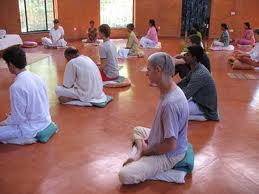
THE THREE BASIC STAGES OF TRAINING OF VIPASSANA
Foreigners, irrespective of their religious beliefs, who have come to the center for a course of training have found no difficulty in developing the following three stages.
Stage 1 :
(a) To abstain from killing any living being
(b) . . . stealing
(c) . . . fornication
(d) . . . telling lie
(c) . . . taking intoxicating drinks.
Stage 2:
To develop the power of concentration to onepointedness. This is developed by focusing ones attention to a spot on the upper lip just beneath the nose synchronizing the inward and outward motion of respiration with
(a) the silent sound of ‘Amen’ in the case of Christians,
(b) ‘Aum’ in the case of Hindus,
(c) ‘Allah’ in the case of Mohammedans and
(d) ‘Sat-Nam’ in the case of Sikhs.
This is done till the wavelength of respiration becomes finer and finer and the Mind gets settled down to a point and the candidate secures what may be called the one-pointedness of the mind.
Stage 3:
With the power of mind so developed, the candidate is trained to become sensitive to the atomic reactions which are ever taking place in himself. It is a practical demonstration of the theory of atomic reactions in Man which are vividly described by Dr. Isaac Asimov, Associate Professor of Biochemistry at the Boston University School of Medicine, in his book Inside the Atom”. (See extracts from the Book enclosed)
This study of nature in Man, as it really is, will pave the way for greater experiences ahead.
The results which follow this course are definite and the candidate realizes on his own that a change for the better is taking place in him slowly but surely.
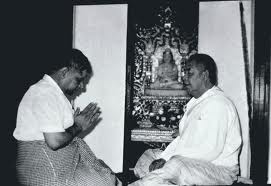
Extract from ‘Inside the Atom’ by Isaac Asimov
CHAPTER 1
ATOMIC CONTENTS
What all things are made of
There are so many things in the world that are so completely different from one another that the variety is bewildering. We can’t look about us anywhere without realizing that.
For instance, here I sit at a desk. made out of wood. I am using a typewriter made out of steel and other metals. The typewriter ribbon is of silk and is coated with carbon. I am typing on a sheet of paper made of wood pulp and am wearing clothes made of cotton, wool, leather, and other materials. I myself am made up of skin, muscle, blood, bone, and other living tissues’, each different from the others.
Through a glass window I can see sidewalks made of crushed stone and roads made of a tarry substance called asphalt. 1t is raining, so there are puddles of water in sight. The wind is blowing, so I know there is an invisible something called air all about us.
Yet all these substances, different as they seem, have one thing in common. All of them – wood, metal, silk, glass, flesh and blood, all of them – are made up of small, separate particles. The earth itself the moon, the sun, and all the stars are made up of small particles.
To be sure, you can’t see these particles. In fact. if you look at a piece of paper or at some wooden or metallic object, it doesn’t seem to be made of particles at all. It seems to be one solid piece.
But suppose you were to look at an empty beach from an airplane, The beach would seem like a solid, yellowish Stretch of ground. It would seem to be all one piece. It is only when you get down on your hands and knees on that beach and look closely that you see it is really made up of small, separate grains of sand.
Now the particles that make up everything about us are much smaller than grains of sand. They are so small, in fact, that the strongest microscope ever invented could not make them large enough to see, or anywhere near large enough. The particles are so small that there are more of them in a grain of sand than there are grains of sand on a large beach. There are more of them in a glass of water than there are glasses of water in all the oceans of the world. A hundred million of them laid down side by side would make a line only half an inch long.
These tiny particles that all things are made of are called atoms.
Extract from Page 159 of Inside the Atom
by Isaac Asimov
“For one thing, chemists now have a new tool with which to explore the chemistry of living tissue. (This branch of the science is called biochemistry.) In any living creature. such as a human being, thousands upon thousands of chemical reactions are all going on at the same time in all parts of the body. Naturally, chemists would like to know what these reactions are. If they knew and understood them all, a great many of the problems of health and disease, of life. aging, and death, might be on the way to solution. But how are all those reactions to be unraveled? Not only are they all going on at the same time, but there are different reactions in different parts of the body and different reactions at different times in the same part of the body.
It is like trying to watch a million television sets all at once, each one tuned to a different channel, and all the programs changing constantly.”


Sri Sayagyi U Ba Khin
 Sri Satya Narayan Goenka
Sri Satya Narayan Goenka
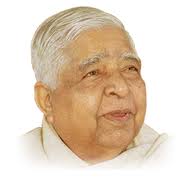

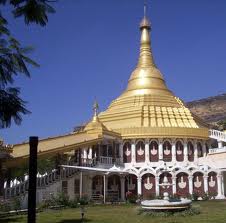
Quick Links
- Home
- About Us
- Water Element- Self Urine Therapy
- About Urine Therapy
- Introduction
- Urine Test
- Scientific Information
- How to Do Urine Therapy
- Information on Urine Therapy
- WORLD CONFERENCE ON URINE THERAPY
- VDO on 6th world conference
- HEALTH CENTERS AND WEB SITES ON UT
- BOOKS ON URINE THERAPY
- AUDIO ON URINE THERAPY
- VIDEO ON URINE THERAPY
- PICTURES on UT
- Urine Therapy Federation of India
- Members of UTFI
- Pictures UTFI
- SELF EXPERIENCES & CASE HISTORY
- Common Questions
- Urine Therapy By
- Natural Healing by Sunil Munot
- UT BY COEN VAN DER KROON
- UT BY MARTHA CHRISTY
- UT BY MARTIN J LARA
- UT BY SWAMI SATYANANDA SARASWATI
- UT BY DEVENDRA VORA, M.D.
- UT by Mike Crowley
- UT By Renee Sunsprit
- UT BY NATALIA PERERA
- UT BY FLORA PESCHEK-BÖHMER PH.D.
- UT BY BIOMEDX
- UT BY DR.G.K.THAKKAR – SHIVAMBU GITA
- UT BY SHIRLEYSWELLNESSCAFE.COM
- UT BY JOHN F. KELLY
- UT BY AHMEN HEAVEN
- UT BY AGAMA YOGA
- UT BY WALTER LAST
- UT BY ALLDEAF.COM
- UT By Cameron Karsten
- Ut by Damar Tantra
- UT By Tony Scazzero
- UT Information by Don Orina
- Best Drinking Water
- SEA WATER
- About Urine Therapy
- Earth Element
- Fire Element
- Air Element
- Sky Element
- Sixth Element
- Chronic Diseases
- Cleaning Elements
- Important links
- Jain links
- Visitors Mail
- Gallery
- Video
- Our Inspiration
- Contribution
- Contact Us


